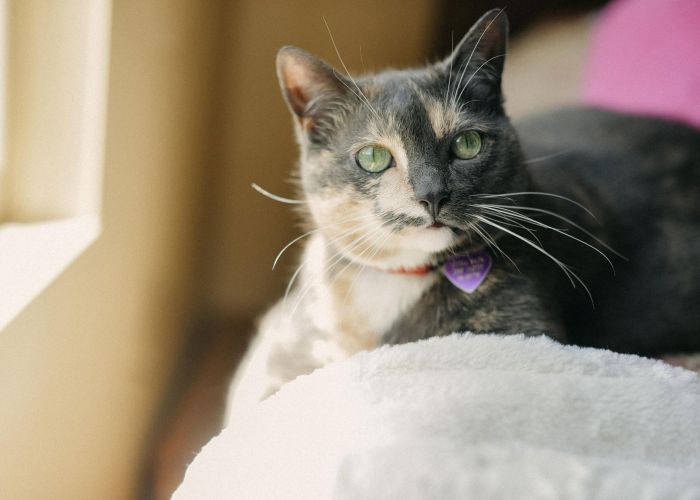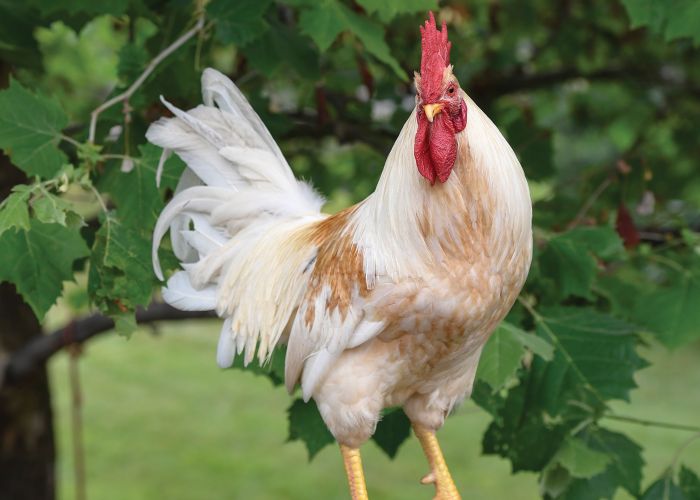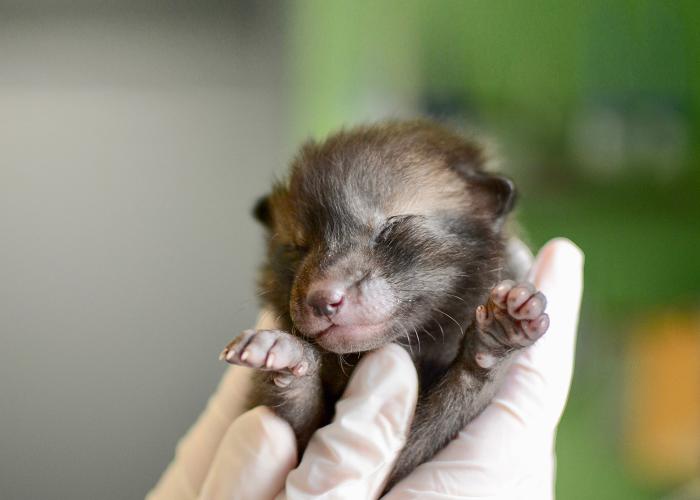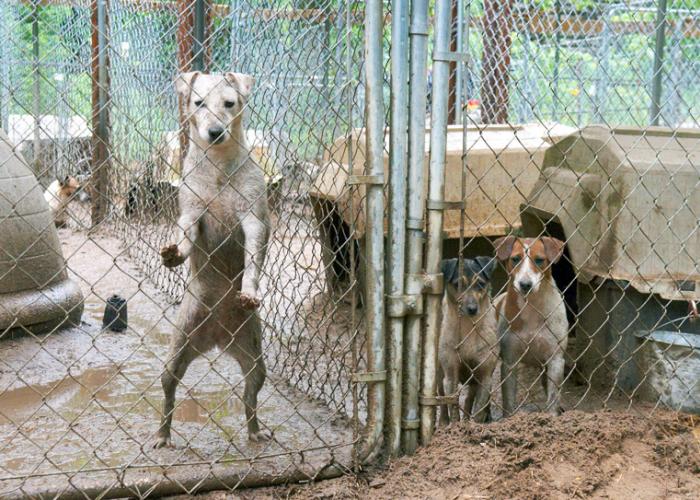Not your mother’s animal shelter
After decades of innovation, sheltering has progressed far beyond its ‘dog pound’ roots

In the 18th century, towns held wandering farm animals in stone enclosures until they could be reclaimed for a fine or sold at the local market. Still standing in parts of England and the U.S., these modest holding spots were known as “pinfolds” or “pounds.”
The word became something more ominous in the 19th century, when rabies panic led the New York City health department to offer a reward for every stray or rulebreaking dog brought to the “pound,” where they could be reclaimed for a fine or killed. The moneymaking potential gave rise to “dogcatchers,” who were known to falsely accuse people of flouting ordinances and sometimes stole dogs right out of their owners’ arms. On a bad day in 1887, around 700 dogs were drowned in the East River.
Thankfully, New York City abolished pounds and dogcatchers in 1894 after the ASPCA agreed to care for strays. “You will not read any more complaints in the newspapers that Mrs. or Miss So and So has been knocked in the breast and has had her pet dog taken away from her by force,” said the society’s then-president to a local journalist.
The abolition was reflective of an overall movement: Inspired by the Royal Society for the Prevention of Cruelty to Animals (RSPCA) in the U.K., the ASPCA formed in New York City in 1866; three years later, the Women’s Humane Society opened a shelter in Philadelphia and hired its own animal control officers. By 1907, every state had some form of anti-cruelty statute. Public perception of dogs and cats evolved from animals to cherished companions, and the role of shelters and animal control officers evolved along with it.
Within 60 years, however, pet homelessness spiraled out of control—an estimated 15-20 million shelter dogs and cats were losing their lives each year. In the public vernacular, “pound” and “dogcatcher” became commonly used slurs, equating shelters’ and animal control officers’ work with a time when pounds were where animals went to die and dogcatchers were sinister.
It was time for another movement—one that spawned innovative, dynamic shelters that embrace the people in their communities, so far from pounds you wouldn’t even call them the same breed.

From fatalistic to fired up
“Most of the time, the best we could offer most of our shelter animals was this quote-unquote ‘stress-free, humane death,’” says Kirsten Vantwoud, COO at the Humane Society of Indianapolis (IndyHumane). Like many in the sheltering world, she recalls her first job in the field at “a little tiny facility with six dog kennels and a garden shed for cats at a wastewater treatment plant.”
It was the early ’90s, and back then, “we weren’t focused on how we could do anything differently. If a few got lucky and got adopted out, that was awesome, but for most of these animals, the shelter really was the last stop, and the best I could do was keep them as comfortable as possible until that very last breath.”
In the years since, though, shelters have gotten far more ambitious. They’ve recognized their capacities, not only to provide housing and care, but to save lives. It’s no coincidence that in 1998, the first-ever formal shelter medicine class was held at Cornell University, heralding a new understanding of what keeps shelter animals physically and mentally healthy. Now, there’s even an Association of Shelter Veterinarians, which released model shelter standards in 2010. Humane Society Silicon Valley became the first shelter to achieve “model” status just last September.
“The science of animal sheltering has changed a lot,” explains Allison Maeir, communications and outreach manager at the Idaho Humane Society in Boise. The public might be surprised to learn that there’s science behind modern shelters’ air flow, natural light, noise management, disease prevention and activities. Many shelters now hire trainers and behaviorists who plan animals’ days like toddlers at day care, including scheduled walks, snacks, soothing music and interesting scents, known collectively as “enrichment.” Once outlandish-seeming ideas are now commonplace, like placing bird feeders outside shelter windows to entertain resident cats or matching dogs with similar personalities for playgroups.
During the eight years that she’s led the Lynchburg Humane Society in Virginia, Makena Yarbrough has experienced both the legacy of sheltering’s past and the promise of its future. When she was hired as executive director in 2009, half of the roughly 1,400 animals who came through Lynchburg Humane’s doors each year were euthanized.
The shelter was initially run out of a vet’s office in the ’60s, with improvements added piecemeal over time. “Back in those days, ‘sheltering’ was just—that’s what it was. The philosophy wasn’t to do a whole lot with adoptions, it was just a holding place for animals,” Yarbrough says. “It was not created to be a holding place for life. It was created to be a place where animals would be euthanized.”
Shelters have recognized their capacities, not only to provide housing and care, but to save lives.
Although Lynchburg Humane’s attitude toward sheltering progressed, its building remained trapped in the past, with ventilation issues, gaps in the walls, cracked floors and peeling paint. And so with the battle cry “Lynchburg’s homeless pets deserve better,” Yarbrough scouted potential locations, applied for rezoning, formed a new board, campaign committees and subcommittees, and officially launched a capital campaign. Board and committee members, many of whom were afraid to set foot in the old shelter, helped Lynchburg Humane surpass its fundraising goal by half a million dollars in two and a half years.
The new building has air conditioning—a basic necessity that’s lacking at many older shelters—as well as skylights and glass bricks between kennels to maximize natural light. There are walking trails and play areas outside and screened “catios” outfitted with swinging chairs. Dogs meet potential adopters in “living rooms,” and cats enjoy free-roaming group “kitchens,” complete with couches and prop stoves. The shelter hosts yoga classes with kittens, kids birthday parties and summer camps, food trucks, a monthly pop-up art gallery and live bands. People often stop by to do a little homework at the “kitchen” table or read a book in the catio.
Yarbrough dreams of going further, of building an outdoor splash pad where Lynchburg’s shelter dogs and community dogs could play and swim. “We always talk about choices,” she says. “I would love it if [dogs] could say, ‘I want to go for a walk.’ Is there a way that they could show us that they want to go for a walk versus they want to go play in the play area? Do they push a red button if they want to go for a walk?”
Dreaming up such futuristic facilities isn’t just about aesthetics. “It’s another way of just thinking, ‘How do we get more people into our building and to see this as much more than a shelter, but as a center for people?’” she says. In fact, although 95 percent of Lynchburg Humane’s 2,172 animals went home in 2016, the shelter’s new slogan doesn’t reference animals at all. It beckons the community with something bigger: “Find happiness.”
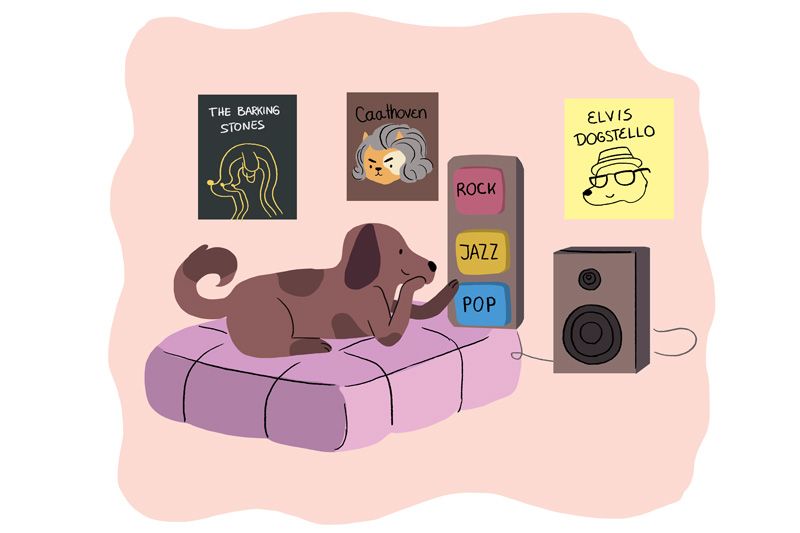
Attitude adjustments
What makes people happy—and what makes them repeatedly visit, follow, donate and adopt—are happy animals, uplifting newsfeeds and community-centered shelters. In the public eye, shelter animals are no longer shivering behind the bars of a kennel. Instead, shelter animals are joining yoga classes and wearing flower crowns in your Instagram feed! They’re eating “pupsicles” at Yappy Hour! They’re “teaching” children how to read! They’re preening in the windows of cat cafés and visiting retirement homes!
It’s more than just cute: It’s actually breaking down barriers between the shelter and its community, says Mary Steffen, vice president of operations at the Humane Society of Broward County in Florida. Broward Humane has a robust fostering program that allows both community volunteers and local business owners to foster animals, including the owner of a lingerie store, whose customers have adopted eight cats over two years while browsing bras. A “snuggle delivery” program delivers puppies and kittens to businesses and events for a fee, resulting in 77 adoptions in two years. And the shelter has operated a humane education program since 1978, which has grown to include tours, summer camps, birthday parties, Scout projects, clubs for young and old animal lovers, and more.
“They saw a need. They saw that children are the future pet lovers,” says Steffen of the shelter’s founders. “Anybody who grew up here is very clear about who we are and where we are.”
Breaking down barriers also means welcoming the community from a place of trust. For a long time, shelters and rescues clung to stereotypes about which homes and adopters were good enough for their animals. That led to a plethora of fear-based adopter criteria like no apartment dwellers, people over 60, people with full-time jobs, people without fenced yards or people who forgot to take their existing pets for their annual shots—all real-life examples of rules enforced at various shelters and rescues.
At Lynchburg Humane, former staffers were mired in the belief that “people are bad and they aren’t worth trusting,” Yarbrough says, to the point that even volunteer fosters were turned away. Meanwhile, “they had a room just stacked full of cats waiting to be euthanized.”
“These are community-based problems. So why would you not have community-based solutions?”
—Lisa Norwood, public relations and outreach manager, San Antonio Animal Care Services
Yarbrough says she got rid of unreasonable adoption and foster policies almost overnight; as many shelters were doing, she replaced long written applications with short adopter profiles and matchmaking conversations. “I did a press release on all the changes,” she says, and the shelter’s very first foster, a widow in her 60s, showed up the next day. “She took home three kittens that were bottle babies. She had been wanting to foster, but she had kept being told no.”
From a big-picture perspective, a friendly adoption process encourages people who might have turned to a breeder, pet store or neighbor’s litter of puppies for a hassle-free pet to instead adopt a fixed and vaccinated animal from the shelter. That doesn’t just mean fewer animals in the shelter—it means more fixed, vaccinated pets in homes. “We spay/neuter every animal that comes out of our facility, and a third of the dogs out in the community come through this facility, so a lot of humane society alums are out there,” says Maeir.
Shelters’ newly accessible approach has also paid off in the marketing of spay/neuter and other services that keep pets healthy and out of shelters: Today, it’s common for nonprofits to bring mobile veterinary clinics to the places where people socialize and shop.
When IndyHumane first opened its Animal Welfare Center in 2013, “we were specifically targeting 10 zip codes that produced about 75 percent of the animals that entered animal control,” says Vantwoud. Offering reduced-rate surgeries to those areas, the mobile clinic brought animal control intake down to its lowest number ever in 2015. “I’m speaking for a lot of folks in our field: Euthanasia is not a given anymore.”
A pound of prevention
Although spay/neuter surgeries remain a priority in the field, today’s shelters aren’t just preventing accidental litters, but targeting the issues that lead to pet homelessness. “We’re doing a lot more community work, a lot more work in terms of preventing animals from arriving in the shelter in the first place,” says Maeir.
Coming from a place of pragmatism, rather than judgment, many shelters now accept that a dog or cat can quickly become a shelter animal if they’re lost without a collar or microchip, if they’re sick and their owner can’t afford care, if their owner doesn’t know how to handle house-training issues or leash aggression. To prevent owned pets from becoming shelter pets, many shelters are now opening their own clinics or working with local veterinarians to provide free or low-cost microchips, spay/neuter and other types of veterinary care. Shelter-hosted training classes and behavioral hotlines for anyone with a dog or cat conundrum—some fielding thousands of calls a month—are common.
“The program that has the biggest positive impact every single day [is] surrender prevention,” says Steffen, explaining that Broward Humane and the city shelter more clearly defined their roles around five years ago, with one helping pet owners and the other handling strays. “Twenty years ago, there was no surrender prevention. Resources, training, learning and the ability [to tackle] a shared burden have allowed these conversations to start happening.”
Once animals are brought to the shelter, it’s often too late to address their behavior issues and stop the surrender, says Vantwoud. “We have to intervene before they get frustrated enough or desperate enough to make that shelter call.”
Increasingly, intervention means going door-to-door in neighborhoods where veterinarians and pet stores are scarce, building relationships with pet owners and offering animal care resources. In 2012, the City of San Antonio Animal Care Services achieved a live-release rate of over 50 percent—far greater than the single-digit live-release rates of years past, but not the number they’d hoped to achieve, says public relations and outreach manager Lisa Norwood.
“We needed [a plan] that didn’t depend so heavily on the government and instead would reach out to the community. Animal control, animal issues, these are community-based problems. So why would you not have community-based solutions?” she says.
Using a PetSmart Charities grant, the municipal shelter implemented programs that provide medical and behavioral assistance to people trying to surrender animals. When the grant ran out, the city continued to fund the programs. “Something as simple as a mange treatment can cost somebody hundreds of dollars at a [private] vet clinic. Here, [it’s] $25, and I can send this animal back to a home where it’s loved,” says live-release manager Bethany Colonnese.
The shelter also started a comprehensive neighborhood sweeps initiative—more simply known as “blockwalking”—testing the waters with a daylong blockwalk in 2012, during which Norwood, city leaders and a few animal control officers knocked on 150 doors. They now use data to target specific neighborhoods, first bringing in a free microchip clinic and then following up with bilingual blockwalkers, adoption information and a free veterinary clinic. (The HSUS’s Pets for Life program pioneered this approach in 2012, partnering with PetSmart Charities to teach shelters how to add similar outreach to their overall work.)
“We finally figured out that it’s OK that we all do this a little differently. Each of us plays an important role.”
—Kirsten Vantwoud, COO, Humane Society of Indianapolis
“Blockwalking has evolved to where if we don’t hit 3,000 homes with our blockwalk in a month, we didn’t do it right,” says Norwood, adding that animal control officers can now act as on-the-spot blockwalkers with a mantra of “education before citation,” first offering low-cost veterinary services or other resources and writing a citation as a last resort.
“In many cases, our officers are the only interaction that people have with Animal Care Services,” says Norwood. “If you can engage people in a way in which not only do they understand, but they also embrace what you’re saying—in the long run, we’re saving ourselves not only an animal coming in, but we may very well be saving that animal’s life, because we’re creating a thought process about what it means to have a pet in our community.”
After equipping all officers with microchip scanners and restructuring the dispatch system to sort the 100,000 service calls a year San Antonio Animal Care Services receives, the shelter also plans to “flood the market with free microchips,” says director Heber Lefgren. Technology has changed sheltering for the better, he explains: They’re even piloting a new “smart” collar tag that will allow people to scan stray pets’ tags with their smartphones and return those pets to their homes, rather than calling on the shelter.
“Now, it’s a partnership,” he says.
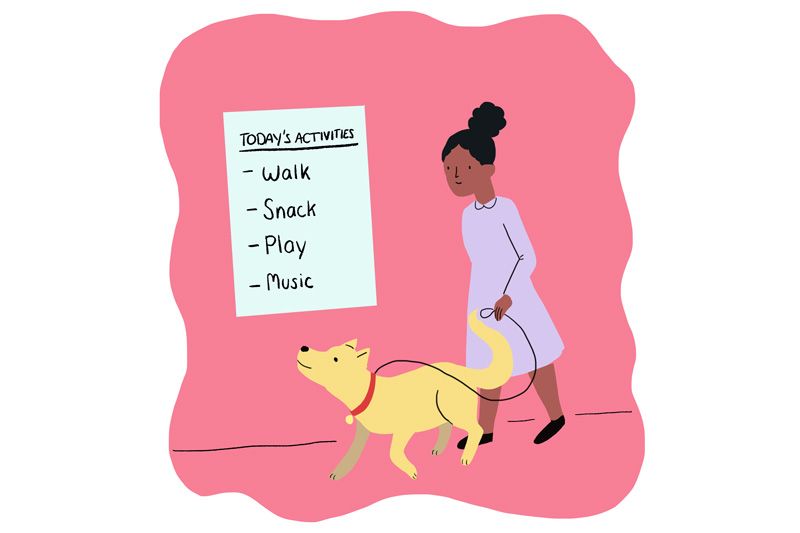
Progressive practices
Shelter pet euthanasia has declined to an estimated 3 million animals a year in the U.S., which Vantwoud attributes to outreach and low-cost, accessible spay/neuter surgeries. Behind each new program and clinic—behind each saved life—are the dozens of subtle ways shelters have evolved, from professionalization of roles in the field to more informed and strategic decision making. Shelters are no longer operating like islands, but tapping into community compassion, embracing volunteers and forming partnerships with rescue groups. So today, a lot of the work of community sheltering isn’t actually taking place inside a shelter.
In 2015 and 2016, 750 organizations pledged to implement programs similar to the ASPCA’s Adoption Ambassadors, which allows fosters to adopt out animals straight from their foster homes. After sending special-needs dogs to the local men’s prison for over a decade, Idaho Humane Society has also started sending sick cats or very young kittens to the local women’s prison for around-the-clock care. Miami-Dade County Animal Services in Florida recently implemented a “milkman” program, sending feeding supplies and care instructions to people who find newborn litters of kittens. Around the country, thousands, if not millions, of community cat caretakers—studies show approximately 10 to 14 percent of households—feed outdoor colonies, some supplying winter shelters packed with straw and spending their weekends trapping, neutering and returning (TNR) feral and semi-feral community cats. There are even programs in Washington, D.C., and Chicago that allow business owners to adopt and care for these cats, who go to work controlling rodents when they might once have been brought to the shelter and euthanized.
Thirty years ago, returning community cats to outdoor homes was viewed with skepticism by many animal welfare groups. Today, TNR programs aren’t just flourishing—they’re giving rise to other innovative solutions. Thanks to grassroots efforts by sheltering professionals, community members and local governments, many cities and shelters now sponsor spay/neuter surgeries for cats living outside and use population modeling to target TNR efforts and track cat populations.
Vantwoud says much shelter policy used to be based on instinct or feeling. “We ‘felt’ like this was a good idea, so we reacted like that. Now, animal control and humane society professionals rely so much on data. We’re targeting our efforts with spay/neuter because we know exactly where the accidental litters in our city are coming from.”
Of course, progress hasn’t hit every community or shelter equally. But slowly, organizations have grown more comfortable sharing the “burden” of homeless pets, even transferring dogs and cats to other shelters and rescues with the space, resources or behavioral expertise. San Antonio Animal Care Services now sends around 60 percent of its animals to rescue partners after vetting, while Idaho Humane takes in hundreds of dogs a month from other shelters, prioritizing nearby organizations.
Meanwhile, organizations like St. Hubert’s Animal Welfare Center in New Jersey reinvest money in the sending shelters, known as “sister shelters,” and provide mentorship opportunities so they can implement programs that tackle the overpopulation issue in their own communities.
“We have a lot more opportunity now to help unwanted animals once they get to the shelter,” explains Vantwoud. In 2004, she started working as a kennel manager at the largest city shelter in Indiana—where more than half of animals were euthanized—and pushed hard for the organization to collaborate with outside rescue groups to find animals homes. The shelter now saves 80 percent of its animals.
“Animal people are wacky, and everybody thinks that their group does it ‘the right way.’ Personalities are difficult, reaching out and saying that you need help … is uncomfortable to people,” she says. “In Indianapolis, we finally figured out that it’s OK that we all do this a little differently. Each of us plays an important role.”
“I used to say, ‘The reason animals are dying in the U.S. is because of ego,’” adds Yarbrough. “People weren’t working together, or they weren’t able to change their philosophies and policies because of what that would mean to them.”
“There’s almost a hesitancy to do anything, because it’s just going to get pointed out how wrong you were before,” says Colonnese. She notes that in 2004, the San Antonio shelter was the subject of a blistering two-part newspaper exposé, “Death by the Pound,” but in 2016, it saved 90 percent of dogs and cats who came through its doors. “It’s just a matter of getting over your own ego and saying, ‘Whatever happens, today’s the day I’m going to change.’”
“We have expectations, and they are high, because we have a lot of work to do. We’re very tired. We’re tired. But it’s worth it,” Norwood says with finality, and as if on cue, Colonnese yawns beside her. “These programs allow [staffers] to have different options than they had 10, 12, 15 years ago,” she adds. “It’s not just saving the lives of your animals. It’s saving the whole of your staff.”


